Rudimental Interview – The Electronic Music Experimentalists
Following their rise to prominence in 2013, Rudimental have collaborated with some of the biggest names in the music industry, amassing multi-platinum sales plus Brit and MOBO awards. MusicTech meets Amir Amor and Piers Agget to discuss the group’s dazzling ascent and album, Toast To Our Differences Grime enthusiasts Piers Agget, Kesi Dryden and Leon […]
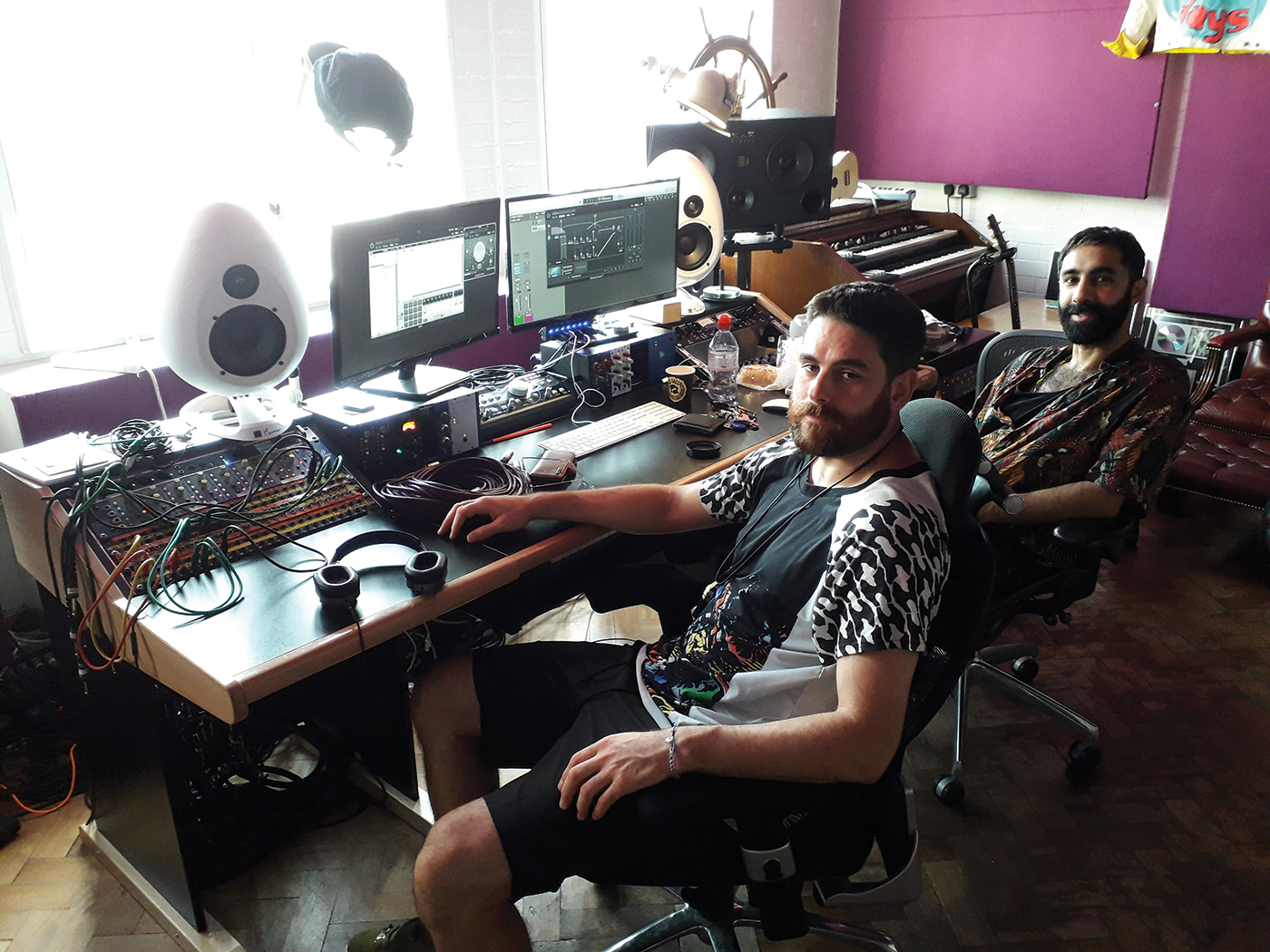
Following their rise to prominence in 2013, Rudimental have collaborated with some of the biggest names in the music industry, amassing multi-platinum sales plus Brit and MOBO awards. MusicTech meets Amir Amor and Piers Agget to discuss the group’s dazzling ascent and album, Toast To Our Differences

Grime enthusiasts Piers Agget, Kesi Dryden and Leon ’DJ Locksmith’ Rolle grew up in the same street and went to the same school together prior to pooling their collective talents to create the unsigned trio Rudiments. Later renamed Rudimental, their debut single Deep In The Valley surfaced in 2011, with producer/ songwriter Amir Amor enrolled to become the band’s fourth member.
As Rudimental’s sound evolved into an explosive mix of dance rhythms and soul-centric vocals, the group first tasted success in 2012 with the multi-platinum-selling chart-topper Feel The Love, featuring the then-unknown John Newman on vocals. Discovering talent became the band’s remit, with the likes of Foxes, Becky Hill and Emeli Sandé recruited for Rudimental’s debut album, the Mercury Prize-nominated Home.
Following a gruelling global touring schedule, Rudimental returned two years later to repeat their success with the long player We The Generation, featuring the likes of Ed Sheeran and Dizzee Rascal. At the time of writing, the band were putting the finishing touches to a third album, Toast To Our Differences, with Hoxton-based studio Major Tom’s acting as their studio jamming and production locale.
You seemed to become very accomplished producers at a very early stage in your career?
Piers: I think Stormzy said it recently when he mentioned his album took him 20 years – and in a weird way we’d been making our debut in our heads for years. I’d always had this dream to mix live music with electronic music – we all did, and we were all musicians, so when we got the opportunity to make an album, tracks like Feel The Love and Not Giving In hit the right formula. We made that album so quickly and Amir had just joined the group as a producer. Within six months, we’d made half the album and we finished it six months later. The label didn’t even want to call us Rudimental – they said we should be called The Russian Kids, because that’s what we looked like on our first photo shoot.
We can understand how, creatively, there’s an outpouring of ideas, but production-wise it’s rare to find a band so professional-sounding…
Amir: I’d already had this studio space for four years before I’d even joined up with Rudimental. I was producing a lot of pop stuff and was the in-house producer for my manager’s record label. Sometimes I’d work on bigger tracks like Plan B, obviously. I probably made four albums before I joined Rudimental; writing, production, mixing – the whole thing. I taught myself how to play a guitar, so I was able to throw live instruments in, and Piers played the organ. I created a lot of sounds for demos and we used a lot of those sounds for Rudimental, reusing a lot of the kicks, snares and hi-hats.
Piers: Amir’s a bit of a scientist. We had a lot of good ideas written, and he had all these soundscapes that he’d built like a stamp collection. He’d been collecting samples and sounds for years and his hard drive was probably one of the most precious things we could ever get. The marriage really worked – it was a connection bound by our love for live and electronic music and the environment we all grew up in.
How did you manage to get so many high-profile collaborators on your debut album?
Piers: One or two artists were down to the label and management, but most of it was down to us. [Uzoechi] Emenike, who wrote Spoons and Baby, still shares a room in this building, and all the songwriters were our friends. John Newman was our client and Kesi found Becky Hill on YouTube because she’d been on The Voice. Networking is especially important for us because we don’t sing the songs. They were all unsigned artists; it was only after our debut album they got signed.
Did you write complete songs, or were they always instrumentals looking for a vocalist?
Piers: Sometimes we wrote the idea with the lyrics in mind and Ella Eyre would sing them, but most of the time we write with artists in the studio and make up the beat on the spot. We like to jam, and one of plusses of being musicians is that if the songwriter is there with you it’s a lot easier and you get a much better feel for the track. We thought about setting up a label and being a platform for the next Ella we found, which is exactly what we did with Anne-Marie Nicholson on the second album. She became our live singer, toured with us and we put her in the sessions to oversee the creative process. Obviously, we’d bump into people like Ed Sheeran who’s on our label, but on album three we’ve continued writing with unknown talent.
So you see yourself more as arrangers and beat-makers rather than songwriters?
Piers: Every now and again I’ll go off into my own little weird world, make loads of beats and send them to grime MCs or do a tune with The Martinez Brothers or Sub Focus. It’s always good to turn up to a session with ten beats, but because of all the touring we don’t sit down and make beats like that anymore. We used to make four or five a day, which is why it’s become more about jamming.
What lies behind the collaborators on the latest album, Toast To Our Differences?
Amir: It’s the same format as our previous ones and the new singers we’re working with. If you come and see us live, you’ll see Olivia Dean, but there’s also a couple of big names on there. People probably don’t know, but on our last album we had George Clinton on a few tracks – we were in the studio here jamming together. He’s literally my idol. We also had Donald Fagan from Steely Dan on Common Emotion, and some old-school reggae artists. It’s really becoming a mixture of who we love and this new pool of talent that most people won’t know, and we’ll have a few established voices to hook people in a little bit. The album definitely has more African and reggae influences.
Piers: These days, we have more of a soul, gospel and hip hop feel. The single with Major Lazer, Let Me Live, is a reggae/soca track, so you’re definitely going to get hit in the face with different styles. I feel our albums are like going to a festival, where you’re dancing in one tent and you go to the next and get a different sound, but it’s always uplifting and summery, with a deep message of positivity.
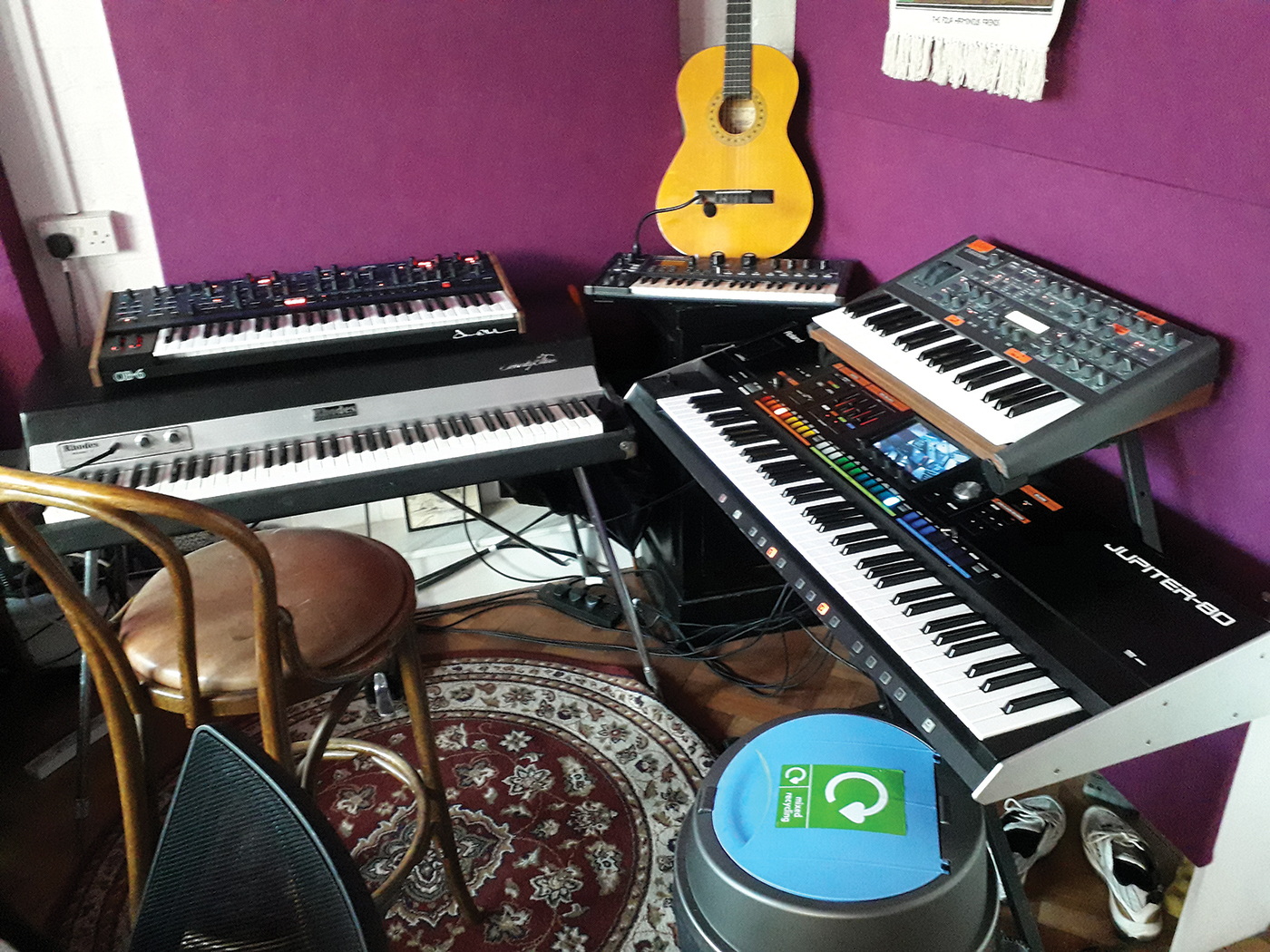
The Rudimental studio
So when did you find this studio space and what did you like about it?
Amir: Back in the 80s, this studio was one of Moloko’s first business endeavours. They had a big Trident mixing console and the room was up for hire. When I was looking for a place, I managed to link up with this guy called Nick Worthington who was starting a management company. I’d been looking at all these dingy little spots, trying to keep it low budget, and my manager at the time told me about this place, but it was very expensive and massive. She brought me up here and I met Richard X who was up here working with Sugababes. It was terrifying, but Nick loved the room so we persuaded Richard to move out [laughs].
Did you keep the mixing console?
Amir: I’m not sure who it belonged to, but the place was completely empty when I moved in; just soundproofed. I had a relationship with Mick Shiner of Pure Groove Records. In return for offering him my services recording vocalists, he gave me a bunch of equipment including a Mackie 8-bus console which picks up radio by accident, and some microphones. I brought my desktop PC over and built a table with a plank of wood and some breeze blocks from downstairs, and a vocal booth.
How did you cope with the expense?
Amir: For the first six months I didn’t do any proper sessions, so I started calling up everyone I knew. It was like a fire up my arse because I was so aware of how much it was costing. That was stressful, but really good too because I started hiring the studio out and recording and co-producing bands. After a few months, it started to
pick up and Atlantic Records started throwing stuff my way. Over the years, I’ve gradually built up the equipment and called the studio Major Tom’s, because I was a Bowie fan.
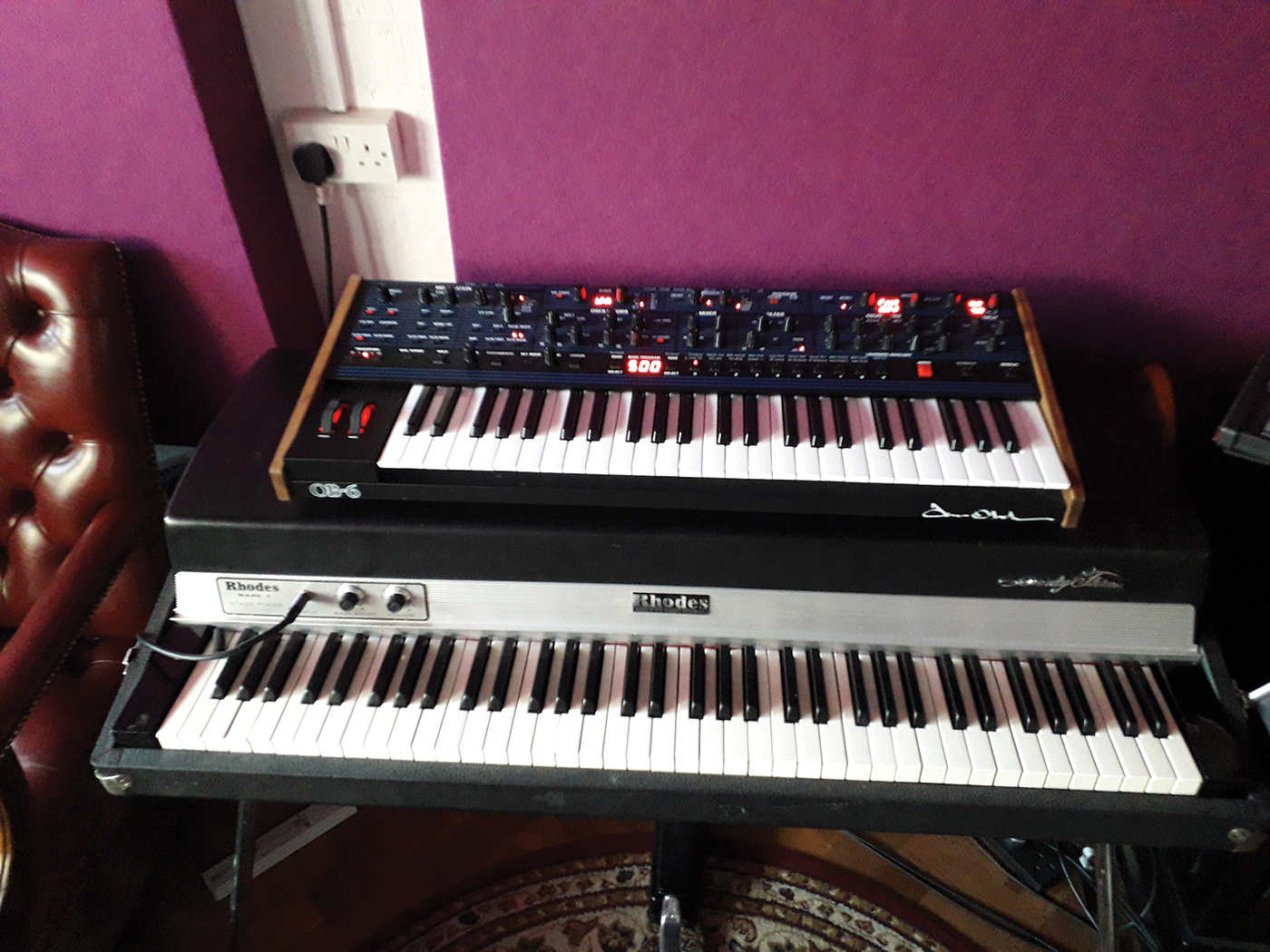
The hardware synth route
Which hardware synths did you most use on the new album?
Piers: The Nord Lead, refaced Prophet 12 and Moog Sub 37 were used on literally every track. There’s a patch on the Nord Lead that I don’t even want to tell you how much we used; it’s our secret patch. I actually find the Prophet quite complex and technical to get your head around – it took about two years, but it’s got some amazing presets and those nice, warm James Blake-style pads.
Amir: There’s like a weird delay feedback thing in the Nord Lead that seems to morph the sound, which is especially useful if you’re working with a straight-up synth sound. We record it all live and don’t really MIDI anything. We might load up a drum loop and go over to Piers’ area where the organs are, then I’ll play guitar and bass and Kesi will be on the Sub 37. Later, we’ll all chip in on the programming side.
Will you tend to use bass guitar for bass sounds or synths?
Piers: You’ll hear on the album that certain tracks are really synthy – a lot of the bass sounds come from the Sub 37. If we’re being honest, sometimes ideas start on the SUB but we end up using Logic ES2, because the basic Logic plugin does the job. But we’re not analogue purists. All the organ sounds on the first album were from the Nord because we find that the Nord leads the way for any emulation of piano, Rhodes and organ sounds. We also use the Hammond because you can’t beat the sound of a B3. We spent about four grand and it was shipped over from a studio in Ibiza. Another essential is the Rhodes. These classic 70s instruments are our favourites; they have a great feel and sometimes it’s easier for vocalists to sing over basic chords from a piano or Rhodes.
So you’ll start jamming on hardware and swap sounds out in the box?
Piers: Exactly. We’ve got a whole MIDI routing system, which is really useful, especially when using Ableton because that’s great with MIDI. All of the synths are rigged into our MIDI patch system, so we can play an idea on the Oberheim OB3, for example, record it into Logic and send that MIDI channel to the Prophet and record the audio back in. Otherwise, we like using the Access Virus. When we’re not touring, we’ll have it in the studio because it’s great for drum ’n’ bass sounds and sawtooth synths. It’s got four oscillators, so you can mess around and get some really wacky sounds in it.
And the Roland Jupiter-80 is another classic reface?
Amir: That’s what we thought when we bought it, but it’s got loads of other stuff in it too. It’s got the Jupiter-8 sounds, nearly every other Roland synth sound, including the SH-09 stuff, and some really nice live pianos. Again, we first used it for our live show, but it’s got so many different sounds we haven’t taken it back out on the road. Some of these synths are too precious to use live. I used an SH-09 monophonic-based synth on our first few tours, but when we were in Australia it got so hot that the whole PCB board melted and fell into it. I managed to fix it, but now we’ll only take modern synths like the SUB 37 because they’re more robust.
What about Novation’s MiniNova synth?
Amir: I don’t know if you remember, but it’s a mini version of the old SuperNova – a rackmount synth that was really big in the 90s. It’s got a lot of the same sounds, so it’s a cool synth, but we don’t use the vocoder much.
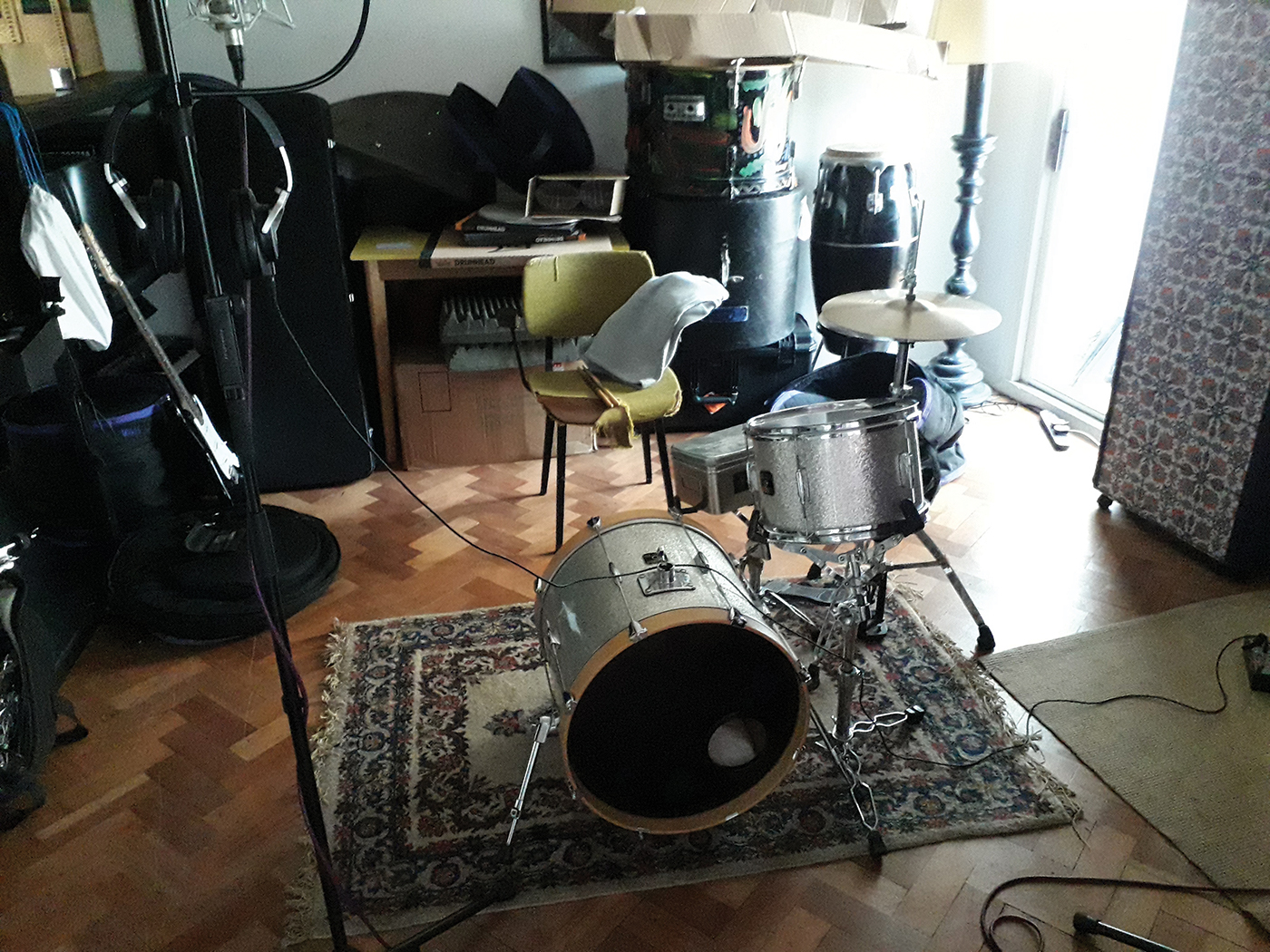
Beat-making tricks
What is the main Rudimental route to beats?
Amir: We use a Dave Smith Tempest. I also used to use Akai MPCs, but now we use FXpansion Geist software, which is like a software version of an MPC, for layering up kicks, snares and hats. Sometimes we’ll push that through the Culture Vulture to give it a bit of grit or an amp to get the vibration of the kit. I also like using parallel compression, which I learned from Spike Stent. He uses it on vocals too. Everything is double tracked and phase-aligned, so you’re not hearing a directly compressed vocal but a clean vocal and a compressed one below it.
The chain: finish to start
What’s the reasoning behind your choice of speakers?
Amir: We had a lot of shitty equipment on the first album, like using a Cambridge Audio amp through NS10 speakers, which is sacrilege to any proper music engineer. I love NS10s even though they have a flat sound, but that thing they say about bad speakers making you a better producer is true because they make you focus on the mid-range. The top end is easy to be honest; it’s the mid-range that’s the hard part. Once we’ve got the vocals, snares and guitars sounding good, and we’ve got a good mix, the bass comes later, which might be opposite to the way a lot of people work, but I guess I come from my live engineering background.
Piers: We mostly use the ADAM S4X-Hs and have a big KRK sub so that when we’re writing we can hear everything nice and loud. This room’s a lot about writing and creating a good vibe, but our neighbours have been complaining – we’re actually on our last warning. The KEF Egg speakers are more used for near field close referencing, so we’re not burning our ears.
Amir: The whole idea of their shape is that you don’t get any bass traps inside of them. When speakers are square, the corners can become areas for bass resonance that ends up phasing each other out so you get dips in the frequency range. The problem with Eggs is that they can’t go that loud because there’s a hole for the bass so they start ‘farting’ after a while, although they’ve got an attenuator on the amp that boosts the middle. They’re like NS10s, but with more bass and vibe – you can mix on these.
You use Logic for sequencing, and Ableton Live?
Amir: We mainly use Logic for production and writing, and Ableton now and again. But recently I’ve gone back to my roots and started using Fruity Loops again. I see them as different instruments. All the hip hop and trap stuff coming out is made in FL because of the way you can put a track together on a grid, the directness of the sound and how it sums the audio at the end. Logic is where we write the songs. We play everything live, chop things up and move things around, and Fruity Loops would be a nightmare for that.
Piers: Recording that way in Ableton can be a nightmare too, but we’ve been getting into using the Push recently. We go through waves really and everything always ends up in Pro Tools because it’s the best for recording and mixing.
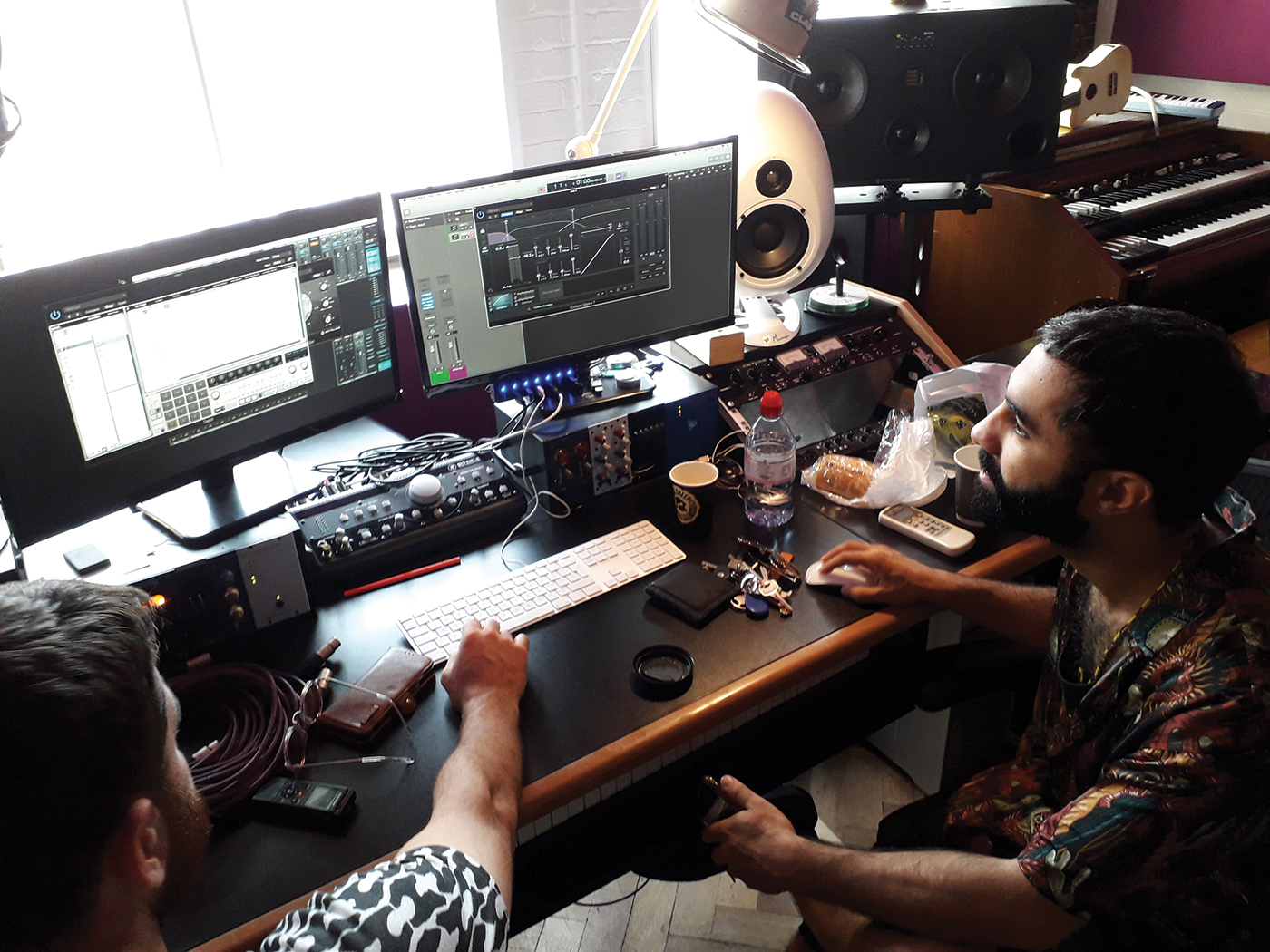
Finally, as there are four in the band, do you all have very distinct roles so you don’t tread on each other’s toes?
Amir: When we first started, Piers and Kesi wrote the majority of the tracks. I didn’t know anything about house music; I was a garage and hip hop purist, so I came in to help put together the ideas – working as a producer, basically. Our roles are quite blurred now, but I’m probably the most tech-oriented one.
Piers: We definitely have our own strengths, although I’ve learned a lot about producing from Amir. These days, I’ll write an idea in the studio; the chorus, a verse and the vibe – and if everyone likes it we’ll pass the session around. Sometimes I’ll go off on tour and be in a hotel room in Russia, bring an idea back, give it to Amir and he’ll make it unique. The process flows really well.
Rudimental’s new album, Toast To Our Differences, should be out in January.